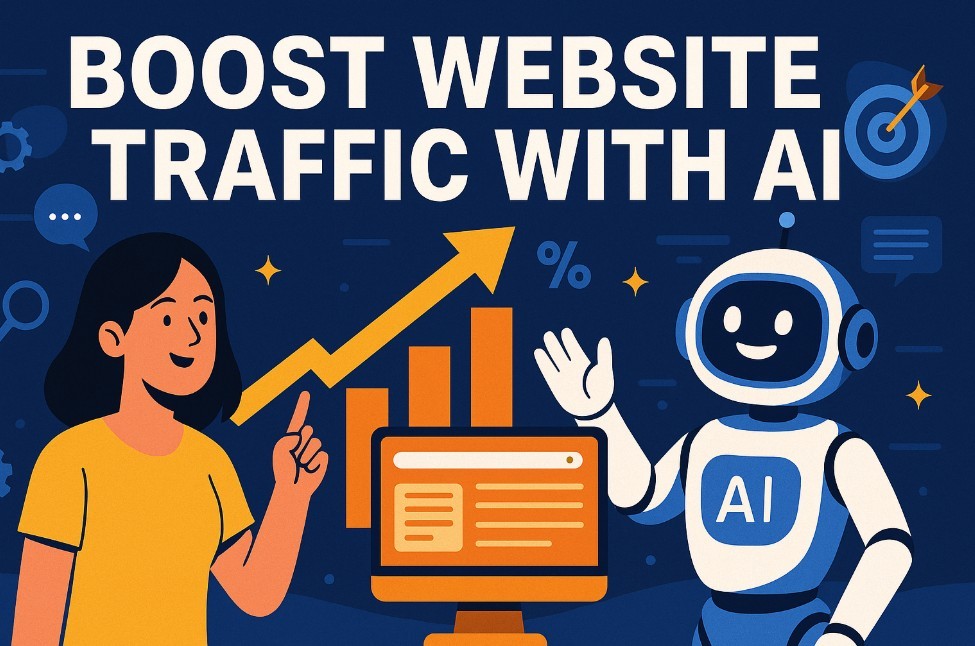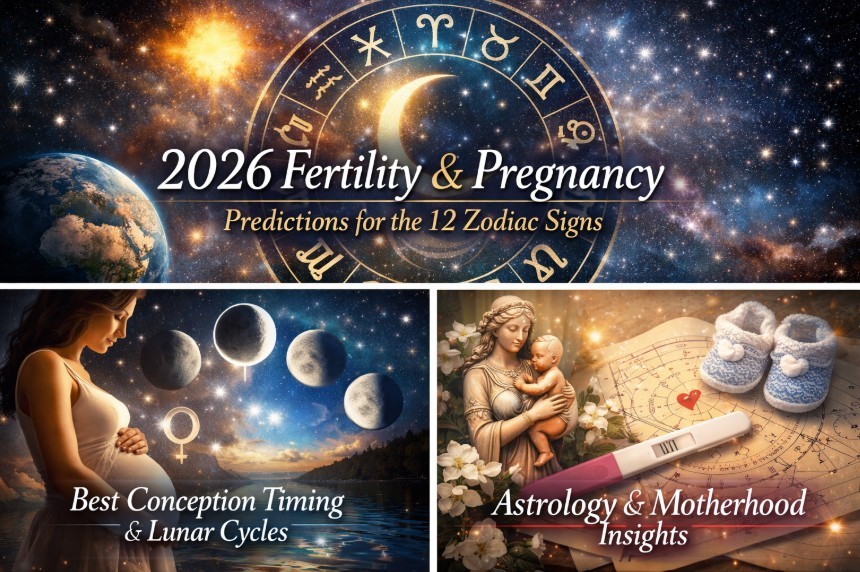The Best Ways to Get More Referral Traffic from AI Search
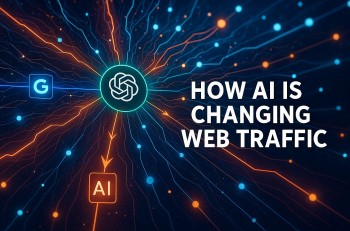 How AI Is Rewriting the Rules of Web Traffic - and What You Can Do About It How AI Is Rewriting the Rules of Web Traffic - and What You Can Do About It |
 How to Make Content Stand Out in the Age of AI: SEO + Strategy Guide How to Make Content Stand Out in the Age of AI: SEO + Strategy Guide |
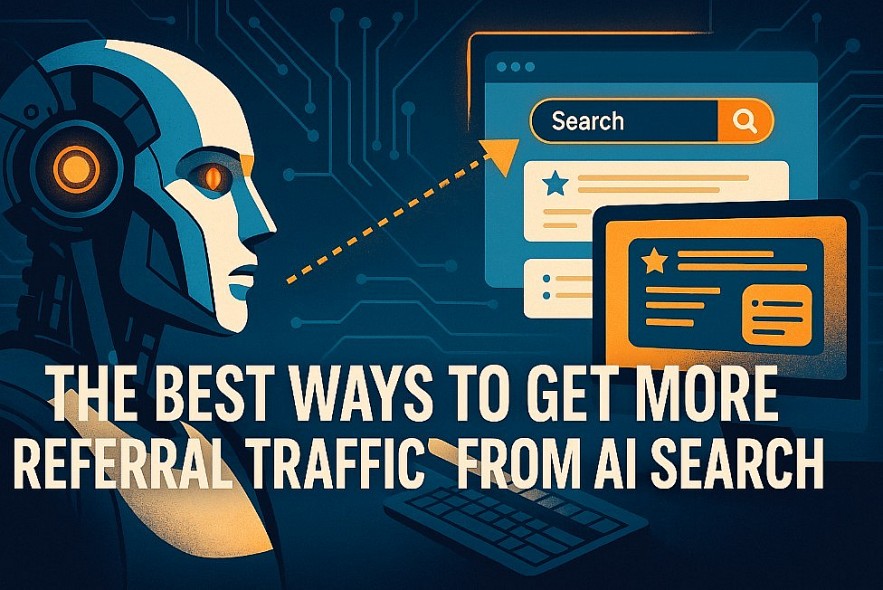 |
| The best ways to get traffic from AI-powered search tools |
What Is AI Referral Traffic (And Why It Matters)
AI referral traffic refers to website visitors that come directly from AI-driven platforms such as ChatGPT, Perplexity, Bing Copilot, Claude, and voice assistants. Unlike traditional search traffic, which originates from Google or Bing queries, AI referral traffic begins when users ask conversational questions to smart assistants and receive structured answers — often citing source links.
In 2025, this trend is accelerating. With the integration of AI assistants into browsers, phones, wearables, and workplace software, a growing share of organic traffic will no longer pass through conventional SERPs. Instead, AI tools will summarize, cite, and recommend trusted sources directly.
Why This Matters
-
Emerging Channel: Early adopters have a rare chance to claim significant visibility before this channel becomes saturated.
-
High-Intent Visitors: Users asking AI for help are likely closer to purchase or action.
-
SEO Shift: The future of SEO includes optimizing for answer engines — not just search engines.
-
Behavioral Change: More users are skipping Google entirely, turning to AI tools for faster, conversational results.
According to DataBox’s 2025 AI Index, 1 in 5 informational queries are now handled primarily by AI agents, not search engines.
Learn more: How to Boost Website Traffic with AI: The Ultimate 2025 Playbook
1. How AI Search Works (and What It’s Looking For)
AI search platforms operate differently from traditional search engines. Instead of ranking links and letting users decide, they curate and synthesize answers, often citing one or two sources.
Core Mechanisms of AI Discovery
-
Indexing: AI language models use crawling and scraping tools to analyze web content — pulling from news articles, blog posts, forums, academic research, and structured databases.
-
Summarization: They generate concise responses using natural language processing. These answers prioritize clarity, simplicity, and factual accuracy.
-
Attribution: Many platforms (e.g., Perplexity.ai, Bing Copilot) now cite their sources — turning your site into a possible traffic endpoint.
What Makes a Site “AI-Friendly”
AI tools look for content that:
-
Is clearly structured with subheadings, bullets, and concise sections
-
Answers questions directly, often within the first 100 words
-
Has current, high-authority, trustworthy signals (e.g., updated dates, author bios, credible citations)
-
Is marked up with schema to clarify meaning and structure
Example: A how-to blog post on "how to set up a VPN" with step-by-step lists, bolded answers, and an FAQ section was cited 14 times by Perplexity within a single week.
To rank in AI, you need to think like an AI — structure content to be instantly usable in a generated response.
Tools That Power AI Discovery:
-
OpenAI GPT-4 (via ChatGPT Plus): Crawls web data using Bing and curated sources
-
Anthropic Claude: Draws from public knowledge + premium feeds
-
Perplexity: Prioritizes real-time web search + citation-rich answers
-
Google Bard (Gemini): Indexes using Google Knowledge Graph + Search
Understanding how these tools reference content allows you to shape yours for maximum visibility.
2. Optimize for AI-Centric Answerability
The cornerstone of earning AI referrals is creating content that AI models can easily parse, understand, and use. Unlike traditional SEO, which often focuses on backlink profiles or meta tag optimization, AI search prioritizes directly usable answers and semantic clarity.
What Makes Content "AI-Answerable"
To appear in AI-generated responses, your content needs to be written for synthesis. That means:
-
Clear formatting (H2/H3 questions, short paragraphs)
-
Natural language answers (avoid keyword stuffing)
-
Structured data (schema markup, bullet points, and ordered lists)
-
Distinct sections that answer specific intents
AI systems are not skimming entire pages—they extract the most relevant block of text. If your answer is buried in fluff or ambiguity, it will be skipped.
The Q&A Content Model
Use the Q&A framework wherever possible:
Example Format:
### What is referral traffic from AI? Referral traffic from AI includes visits from platforms like ChatGPT or Perplexity that cite your website in their answers to user queries. This format is easily digestible for both AI and humans. It increases your chances of being cited in direct answers, summaries, and featured snippets.
TL;DRs and Executive Summaries
Adding a short summary or "TL;DR" at the beginning of blog posts and guides improves scan-ability.
Why it works:
-
AI models like Perplexity often use the first 50–100 words to gauge summary value.
-
It sets user expectations and helps LLMs identify topic relevance.
Example TL;DR Block:
This guide explains how to optimize your website for AI referral traffic by focusing on structured answers, FAQ sections, and schema markup to appear in chatbot-generated results.
Semantic HTML and Schema
Use proper HTML semantics:
-
for titles -
for sections -
andfor lists -
orfor emphasis
Then, add schema markup:
-
Use Article or BlogPosting schema for guides -
Validate with Google’s Rich Results Test and Schema Markup Validator
Include Internal Summaries
Include Internal SummariesFor longer pages, add internal summaries that recap major sections. Example:
“In this section, we explored how to create question-based content and why TL;DR summaries increase citation potential.”
These act as signposts for AI scraping tools that aim to build structured context.
Real-World Application: Citation Case Study
Real-World Application: Citation Case StudyAn e-learning company noticed a spike in AI citations after restructuring their guides with Q&A formatting and schema. Their top-performing blog, "How to Learn Python Fast," gained over 6,000 new visits/month from Perplexity links alone after the update.
3. Dominate Conversational Search With Long-Tail and Natural Language Queries
3. Dominate Conversational Search With Long-Tail and Natural Language QueriesTo win referral traffic from AI, you need to understand how people actually talk to these systems. AI platforms like ChatGPT, Claude, and Perplexity don’t just interpret keywords—they process natural language. That means your content should reflect how people speak, not how marketers write.
Why Conversational Language Wins
Why Conversational Language WinsWhen someone asks an AI assistant, “What’s the best way to learn SEO in 2025?” the tool doesn’t scan for keyword-stuffed blog posts. It pulls from content that mirrors the structure and tone of the query. AI prefers:
-
Full-sentence subheadings -
Simple, direct phrasing -
Contextually rich answers
This aligns with Google’s 2024 Helpful Content update and the AI-driven web’s shift toward intent-based delivery.
How to Discover Real User Questions
How to Discover Real User QuestionsTo create content that matches natural search behavior:
Use Tools That Surface Real Conversations
Use Tools That Surface Real Conversations-
AnswerThePublic: Visualizes user questions around keywords -
AlsoAsked: Maps follow-up questions from Google’s “People Also Ask” -
Quora/Reddit: Look for recurring question themes in your niche
Extract Phrases From Voice Search Behavior
Extract Phrases From Voice Search Behavior-
Use Google’s Search Console to filter mobile and voice-related queries -
Combine with Google Trends data on rising question-based searches
Content Structuring Strategies
Content Structuring StrategiesOrganize your articles into intent-driven modules:
Example:
-
H2: How can small businesses benefit from AI traffic? -
Paragraph: “AI referrals are a low-cost way for SMBs to gain exposure without depending solely on Google Ads or traditional SEO.”
Repeat this format for every key question your audience might ask.
Optimize for Query Context
Optimize for Query ContextRather than repeating exact-match keywords, write to answer:
-
What the user is trying to understand -
Why it matters -
How they can act on it
Before: “Boosting AI referral traffic strategies 2025 tips.”
After: “H2: What are the most effective AI referral traffic strategies in 2025?”
Use Synonyms and Semantic Context
Use Synonyms and Semantic ContextAI understands synonyms better than exact matches. For example:
-
“Get cited by ChatGPT” ≈ “Get mentioned in AI-generated responses” -
“Long-form guide” ≈ “In-depth article”
Vary your language to improve the semantic richness of your content.
Example in Practice
Example in PracticeA fintech blog restructured its top-performing guide from a listicle to a Q&A format. It included full-sentence subheadings like “How does AI help users find better mortgage rates?” As a result, the content began appearing in ChatGPT’s responses to home-financing questions — leading to a 40% increase in referral sessions within 60 days.
4. Target Perplexity and ChatGPT Citations
4. Target Perplexity and ChatGPT CitationsAmong AI-powered platforms, two names stand out when it comes to referral potential: Perplexity and ChatGPT with browsing. Unlike traditional search engines, these tools actively generate content based on web data — and they frequently cite their sources. That makes them powerful gateways for referral traffic.
Why Perplexity Is a Goldmine
Why Perplexity Is a GoldminePerplexity.ai has emerged as one of the most transparent AI search engines. Every response includes a detailed list of sources, typically with clickable links that direct users back to the original sites.
How Perplexity Works:
How Perplexity Works:-
Uses live web crawling (via Bing or its own engines) -
Cites 3–8 URLs for most answers -
Pulls content that is authoritative, current, and well-structured
To get cited by Perplexity, your content must:
-
Be up-to-date (refresh old content frequently) -
Contain specific answers to high-intent queries -
Use proper schema to signal structure
Tip: Perplexity favors sites that include recent stats, definitions, or structured lists — make these elements stand out.
Tactics to Get Cited in ChatGPT with Web Browsing
Tactics to Get Cited in ChatGPT with Web BrowsingChatGPT’s browsing feature (available to Plus users with GPT-4 and Bing integration) retrieves current data from the web and includes links when:
-
Users request citations or sources -
The assistant deems the info useful or non-obvious
Boosting ChatGPT Citations:
Boosting ChatGPT Citations:-
Target niche, long-tail queries (e.g., “Best eco-friendly hosting providers for small startups”) -
Include expert quotes and original research -
Ensure your page loads fast and has clean HTML — GPT scrapers may skip malformed pages
Real Example: An HR tech startup optimized its hiring guides with a Q&A format and original research. Their article, “Top Interview Questions for Remote Roles,” was cited in over a dozen ChatGPT responses by users asking about remote hiring best practices — leading to a 62% jump in monthly organic traffic.
Citation Monitoring Tools
Citation Monitoring ToolsIt’s essential to track which AI systems reference your site. Use:
-
Perplexity Labs: View citation snapshots and monitor trends -
Brand24 / Mention: Monitor AI references and brand mentions across web and social -
Google Search Console: Check for surges in new Bing-originated traffic (a clue GPT is citing you)
Create “Citation Magnets”
Create “Citation Magnets”These are high-value pages that naturally attract AI citations:
-
Definitive guides with current data -
Expert roundups or curated tool lists -
Original research (surveys, benchmarks) -
Lists of best practices or comparison tables
Format these with clarity, break up dense paragraphs, and make key takeaways prominent.
5. Build AI-Friendly Topic Hubs
5. Build AI-Friendly Topic HubsAI tools are trained to recognize authoritative sources, and they do this by identifying content clusters around a particular topic. A single blog post won’t win you the trust of an LLM. What will? A network of interlinked, semantically related content pieces — known as a topic hub or content cluster.
What Are Topic Hubs?
What Are Topic Hubs?Topic hubs are structured collections of content that collectively establish your site as a subject matter authority. They typically include:
-
A pillar page: Comprehensive guide targeting a broad keyword -
Multiple cluster pages: Deep dives into subtopics, each linking back to the pillar
This internal linking and topical depth signal authority to both search engines and AI crawlers.
How AI Benefits from Topic Hubs
How AI Benefits from Topic HubsAI systems favor structured knowledge sources because:
-
They improve understanding of context -
They reduce hallucination risk (AI prefers cohesive ecosystems) -
They are easier to parse and summarize
Example: A SaaS analytics company built a topic hub around "customer retention." The pillar page linked to articles on churn prediction, email re-engagement, and onboarding best practices. After rollout, ChatGPT began citing the hub as a go-to resource for B2B retention — driving a 35% lift in AI-sourced traffic.
Building Your Own AI-Optimized Topic Hub
Building Your Own AI-Optimized Topic Hub-
Choose a Core Topic-
Use tools like Ahrefs, SurferSEO, or SEOwind to find a high-volume term with related long-tails
-
-
Draft Your Pillar Page-
Should be 2,000–3,000 words -
Include table of contents, jump links, and structured sections
-
-
Build 5–10 Supporting Articles-
Answer specific, related questions -
Use Q&A and how-to formats -
Cross-link them to the pillar and each other
-
-
Schema Everywhere-
Add Article, FAQ, BreadcrumbList schema -
Consider HowTo or WebPage markup for tutorials
-
-
Update Quarterly-
AI models use recency as a trust signal -
Refresh stats, links, and summaries
-
Hub Layout Example:
Hub Layout Example:Pillar Page:
-
“The Ultimate Guide to AI Content Optimization”
Clusters:
-
“How to Use Schema Markup for AI” -
“Best Tools for AI SEO in 2025” -
“How to Create AI-Friendly Summaries” -
“Optimizing Articles for ChatGPT Citations” -
“Tracking AI Referral Traffic With Google Analytics”
Design and UX Tips
Design and UX Tips-
Include a sidebar or table linking to all hub pages -
Use consistent templates and clear headline hierarchy (H2 > H3) -
Add visual cues like icons, cards, or timeline elements to aid scan-ability
Final Thoughts
Final ThoughtsIf you want to become the go-to site that AI turns to, don’t publish in isolation. Build ecosystems. With a well-crafted topic hub, you’re no longer just ranking—you’re defining the conversation.
6. Create First-Party Data and Expert Insights
6. Create First-Party Data and Expert InsightsAI-powered tools prefer original, authoritative content that reflects real-world expertise. While rehashing known facts might get you indexed, it won't earn citations. To stand out in the AI age, you must generate first-party data and surface credible expert perspectives that can’t be found anywhere else.
Why First-Party Data Works
Why First-Party Data WorksLanguage models are designed to detect patterns—and they prioritize content that introduces new information. AI tools like Perplexity, Claude, and Bard frequently cite pages that include:
-
Proprietary studies or benchmarks -
Unique visuals (charts, infographics, custom frameworks) -
Real business outcomes (case studies, before/after data)
Example: A cybersecurity firm published a 2024 ransomware trend report using anonymized internal data. Within weeks, ChatGPT and Perplexity cited it over 40 times in AI answers related to “current cybersecurity trends.” The page generated over 9,000 visits/month from AI referrals.
Formats That Attract AI Citations
Formats That Attract AI Citations-
Data-Driven Reports: Annual industry benchmarks, surveys, trend analyses -
Case Studies: With concrete metrics (e.g., “+212% growth in 6 months”) -
Infographics: Summarizing multi-point data or comparisons -
Expert Interviews: Quotes from niche specialists that sound credible and human
How to Generate First-Party Data
How to Generate First-Party Data-
Run Internal Surveys: Ask your users, clients, or partners about relevant challenges. -
Extract Platform Metrics: Use anonymized data from your SaaS app, blog, CRM, or store. -
Conduct Interviews or Roundups: Gather viewpoints from industry voices or in-house thought leaders.
Publishing Best Practices
Publishing Best Practices-
Include methodology: How the data was gathered, sample size, and tools used. -
Use visual hierarchy: Highlight key insights using bold stats, callouts, and section intros. -
Link to supporting sources: AI values cross-verified data, not standalone claims.
Bonus: Annotate Your Data With AI
Bonus: Annotate Your Data With AIUse tools like Narrato AI, ChatGPT Advanced Data Interpreter, or Pinecone to:
-
Create AI-summarized takeaways from your data -
Draft Q&A-style recaps based on charts or results -
Suggest snippet-friendly formats for answer engines
Repurposing Expert Content
Repurposing Expert ContentIf you conduct a podcast, webinar, or YouTube interview:
-
Transcribe it using Otter.ai or Descript -
Extract quotes and build a “Highlights from the Expert” section -
Tag sections for Schema (Person, Article, Q&A)
Example Layout:
“John Mayer, CTO of EdgeGuard, says: ‘Our SOC saw phishing attempts rise 2.4x in Q1 alone, especially in Latin America.’”
This kind of attribution, when well-cited, improves both human credibility and AI scrapability.
7. Submit to AI-Integrated Tools, Directories, and Plugins
7. Submit to AI-Integrated Tools, Directories, and PluginsIn addition to optimizing your own site, another powerful way to capture AI referral traffic is by getting listed inside the ecosystems of AI platforms themselves. Think of it as SEO for the tools that answer your audience’s questions.
Why These Platforms Matter
Why These Platforms MatterAI systems often surface data and links from trusted directories, APIs, or plugin stores. If your product or content is accessible through these platforms, you're more likely to be referenced in:
-
Dynamic answers -
Conversational recommendations -
Assistant-driven workflows
Popular Ecosystems to Target
Popular Ecosystems to Target-
OpenAI Plugin Store: Extend ChatGPT with custom plugins that connect to your content or services. -
Zapier AI Integrations: Use Zapier's AI prompts and automation workflows to appear in use-case search. -
Notion AI and ClickUp AI Galleries: Submit your tools or templates as productivity solutions. -
Perplexity Contributor Platform (beta): Apply to include your blog, podcast, or data feed. -
Google's AI-Powered SGE (Search Generative Experience): Ensure content is eligible by passing E-E-A-T, schema, and AMP compatibility.
How to Get Listed
How to Get Listed-
Register and Submit: Sign up with developer access where available (e.g., OpenAI, Zapier). -
Optimize Metadata: Write clear, AI-readable descriptions using structured JSON or markdown. -
Link to Deep Content: Provide endpoints or APIs to content libraries or dynamic content. -
Promote Your Plugin: Showcase its use cases in blog posts, videos, and tool roundups to attract usage.
Example: A personal finance blog developed a ChatGPT plugin called "Ask My Budget Coach," which pulled data from their top calculators and money-saving guides. Within three months, plugin usage resulted in over 20,000 additional site visits and a 12% email signup rate.
Bonus Tactic: AI Product Hunt
Bonus Tactic: AI Product HuntIf you launch an AI-enhanced tool, feature it on platforms like:
-
Product Hunt (AI Tools Category) -
Futurepedia.io -
There’s An AI For That
These sites are indexed heavily by LLMs and frequently used as knowledge bases for AI agents.
8. Optimize for Voice and Multimodal Queries
8. Optimize for Voice and Multimodal QueriesAs AI becomes increasingly embedded in our devices and daily routines, optimizing for voice and multimodal search is no longer optional—it’s essential. People are asking smart speakers, virtual assistants, wearables, and even vehicles for information. If your content isn’t prepared to be heard—or seen—it won’t be found.
Understanding Voice and Multimodal AI Search
Understanding Voice and Multimodal AI SearchVoice queries differ from text in structure and context:
-
They’re longer and more natural-sounding (“What are the best AI marketing tools for small businesses?”) -
Often location-sensitive (“Find AI SEO tools near me”) -
Conversational in intent (“Can AI help me write blog posts faster?”)
Multimodal AI search includes not just voice but images, documents, and videos that can be parsed and interpreted together.
How to Optimize for Voice Search
How to Optimize for Voice Search-
Use Natural Language Phrasing-
Incorporate FAQs into content using how, what, when, where, and why -
Avoid jargon and overly technical language in summaries
-
-
Create Concise Answer Blocks-
Voice search prefers answers under 30 seconds when spoken aloud -
Lead with the answer, then add context
-
-
Add Speakable Schema Markup-
Use speakable properties to highlight key voice-friendly content -
Prioritize “key facts” sections in your how-to guides and explainers
-
-
Improve Page Speed and Mobile UX-
Voice queries often come from mobile—optimize for fast loading, touch-friendly design, and clear headlines
-
Strategies for Multimodal Search Optimization
Strategies for Multimodal Search Optimization-
Use Descriptive Alt Text on Images-
Ensure every visual element is labeled and contains semantic meaning
-
-
Leverage AI-Enhanced Video Content-
Add accurate captions, transcripts, and summaries for each video -
Structure content with timestamps for chaptering
-
-
Embed Downloadables with Rich Metadata-
PDF whitepapers, slides, or templates should have metadata embedded with title, author, and topic context
-
-
Train AI Models on Your Visual Data-
Platforms like Google Vision AI or OpenAI’s CLIP can process your image datasets — ensure your visuals are structured accordingly
-
Real-World Example: Local Voice Query Optimization
Real-World Example: Local Voice Query OptimizationA regional legal services firm created a “Voice Answers” blog series addressing hyper-local law questions (“What are the eviction rules in Austin in 2025?”). These pages:
-
Used speakable markup -
Answered in 40–50 word blocks -
Included follow-up questions in a list format
Result: A 27% increase in traffic from voice assistant devices and a 19% bump in local leads.
9. Analyze, Test, and Evolve Your AI Referral Strategy
AI search behavior, tools, and ranking signals are rapidly evolving. What worked last quarter may not work next. That’s why a flexible, data-driven approach to testing and iteration is key to sustained AI referral growth.
What to Measure
Start by tracking metrics that indicate direct and indirect AI impact:
-
Referral Source Analysis: Monitor URLs with referral strings like
perplexity.ai,chat.openai.com, or specific AI browser agents -
Organic Traffic Trends: Check for content-specific surges that don’t align with typical SEO patterns
-
Time on Page & Engagement: Users from AI sources tend to skim and convert faster — shorter visits may still be valuable
Tools to Use
-
Google Analytics 4 (GA4): Segment by referrer or custom event
-
Google Search Console: Watch Bing indexing and unusual CTR patterns
-
Brand24, Mention, Feedly: Track mentions from AI-generated summaries
-
Perplexity Labs: Monitor citations of your domain
-
GPTBot Crawler Logs: See if your pages are accessed by AI crawlers in your server logs
A/B Testing for AI Appeal
Try testing two versions of the same article:
-
One formatted for voice (short paragraphs, question headers, TL;DR at top)
-
One traditional format
Compare their citation frequency and behavior using tracking scripts and user analytics.
Build an AI-Specific Content Dashboard
Create a performance view specifically for AI referral behavior. Include:
-
High-performing posts by AI source
-
Queries and citation volume
-
Engagement and conversion rates by referrer
-
Update frequency and freshness score
Use this dashboard to guide future content updates and test ideas.
Adapt Based on Results
If your content isn’t cited, ask:
-
Is the summary too long or vague?
-
Does it include outdated data?
-
Are you answering the actual query clearly and early in the text?
-
Is schema missing or incorrect?
Prioritize updating underperforming high-potential pages before creating new ones.
Iterate Quarterly
At least once per quarter:
-
Audit your top 50 URLs for AI optimization
-
Refresh outdated stats and broken links
-
Add new Q&As or subheadings
-
Update schema and metadata
Final Conclusion: Positioning for the AI Search Future
The web is no longer navigated solely by humans typing keywords into search bars — it’s being co-navigated by algorithms, large language models, and conversational agents. To earn referral traffic from AI in 2025 and beyond, marketers must adopt a new mindset: optimize for understanding, not just ranking.
From SEO to AIO (AI Optimization)
Traditional SEO best practices still matter — but they must now coexist with strategies for AI systems that:
-
Interpret conversational queries
-
Cite structured, concise, and authoritative answers
-
Prefer fresh, semantically rich content
That means your website needs to do more than rank well. It needs to become:
-
Answerable: Capable of providing instant clarity
-
Citable: Trusted and structured for attribution
-
Contextual: Part of a larger ecosystem of credible information
Final Actions to Stay Ahead
-
Invest in AI-specific content structure: Prioritize Q&A, TL;DR summaries, and schema markup.
-
Monitor AI ecosystems: Stay current on ChatGPT plugins, Perplexity updates, and Google SGE evolution.
-
Keep testing: Treat AI referral as a new channel in your analytics stack. Refine your strategy quarterly.
-
Publish original value: Create data and insights that AI tools can’t find anywhere else.
-
Think beyond text: Optimize for voice, visuals, and API-fed results.
The AI Traffic Opportunity
Brands that optimize for AI referral now are positioning themselves for the next decade of search behavior. AI won't just supplement how people browse — it will become the interface for how decisions are made, actions are taken, and content is discovered.
Make your site the one AI wants to cite. Build it with clarity, credibility, and connectivity. The AI web is already here — and it rewards those who are ready.
Frequently Asked Questions (FAQs)
What is AI referral traffic?
AI referral traffic includes website visits that originate from AI-powered platforms such as ChatGPT, Perplexity, Claude, and others that cite your website when generating responses to user queries.
How is AI referral traffic different from traditional SEO?
Traditional SEO focuses on keyword rankings within search engines. AI referral traffic comes from conversational queries and direct AI-generated recommendations based on semantic relevance, authority, and content structure.
How can I see if my site is getting AI referral traffic?
Use tools like Google Analytics 4, server logs, and referrer strings from perplexity.ai or chat.openai.com. You can also monitor citations through tools like Brand24, Mention, and Perplexity Labs.
Which types of content are most likely to get cited by AI?
-
Q&A formatted articles
-
Original research or benchmarks
-
Clear definitions and glossaries
-
How-to guides and FAQs
-
Structured content hubs with internal links
What is the easiest way to start optimizing for AI referrals?
Begin by restructuring existing content with TL;DR summaries, FAQ sections, proper schema markup, and concise answer blocks. Refresh outdated content and align it with conversational query intent.
Do I need technical skills to appear in AI-generated responses?
Not necessarily. Clear writing, structured formatting, schema markup (which can be generated using tools), and consistent content updates are more important than advanced coding.
Can AI traffic convert into leads or sales?
Yes. In many cases, AI-driven visitors are high-intent users seeking direct answers, tools, or services — making them more likely to convert, especially when guided by optimized landing pages.
Will this replace traditional SEO?
No — it will complement it. Think of AI optimization (AIO) as a layer built on top of your SEO foundation. The goal is to future-proof your strategy for multi-channel, AI-assisted discovery.
 How to Make Content Stand Out in the Age of AI: SEO + Strategy Guide How to Make Content Stand Out in the Age of AI: SEO + Strategy Guide AI-generated content floods the web—but most of it fails. Learn how to rise above the noise with expert content, smart SEO, and human insight. |
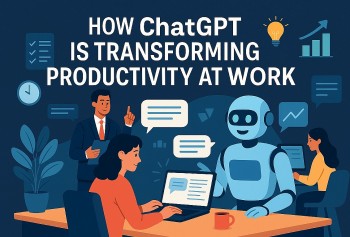 How ChatGPT Is Transforming Productivity at Work How ChatGPT Is Transforming Productivity at Work In an era where efficiency defines success, professionals are turning to tools that help them do more with less. ChatGPT is one of those tools—an ... |
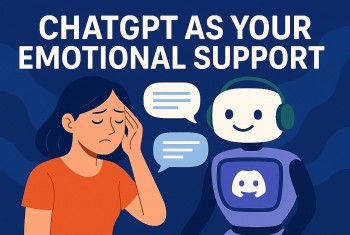 ChatGPT as Your Emotional Support: Exploring AI in Mental Health ChatGPT as Your Emotional Support: Exploring AI in Mental Health Let’s explore the emerging role of ChatGPT in emotional support—and its promises and boundaries. |
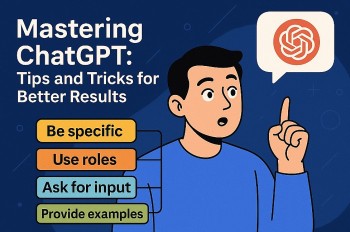 Mastering ChatGPT: Tips and Tricks for Better Results Mastering ChatGPT: Tips and Tricks for Better Results While millions have discovered the magic of ChatGPT, only a small percentage know how to harness its full potential. If your experience so far feels ... |
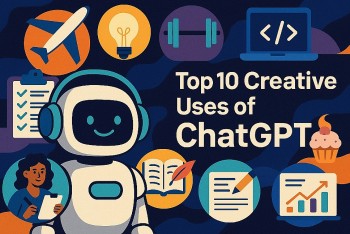 Top 10 Innovative Uses of ChatGPT You Haven’t Tried Yet Top 10 Innovative Uses of ChatGPT You Haven’t Tried Yet Here are 10 unexpected, creative uses of ChatGPT that are surprisingly effective—and surprisingly underused. |


